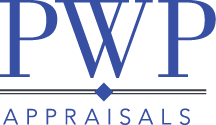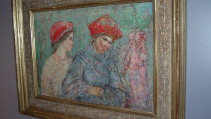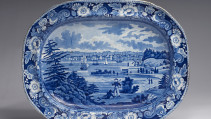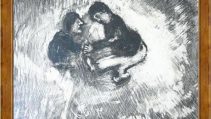Exerpts from Article.
Law360, New York (November 2, 2015, 11:43 AM ET) — Recently making the rounds in the media circuit are reports on a fascinating new authentication system that would allow living artists to effectively “sign” their artworks with very small amounts of synthetic DNA.
This new authentication system is encompassed more broadly within “i2M,” a new standards-based technology that is uniquely developed to provide an industrywide solution to the longstanding problem of faked, forged and stolen art in the art world.
This article provides an overview of the i2M Standards and addresses the legal implications of the i2M Standards technology from an intellectual property perspective. Instrumental in the development of this technology is the Global Center of Innovation for i2M Standards (previously known as the SUNY Center of Innovation), a not-for-profit, independent international center.
Founded in 2014, the Global Center of Innovation is based at the State University of New York at Albany and is sponsored by ARIS Title Insurance Corporation, which specializes in art.
Background of the i2M Standards The i2M Standards are newly developed global standards governing the marking and identification of art objects and intellectual rights. According to the inaugural i2M Standards website, this is the first initiative of its kind to: establish industry standards by which all art will be invisibly and permanently marked at the point of manufacture or discovery for primary market objects and at a defined point in time and intervention for secondary market objects, allowing all objects to be recognizable as indisputably authentic or, if not previously marked, as the indisputably subsequently-identified object.
Standards: The first part of the solution establishes the ground rules that define the types of complex issues being encountered by the art industry today and will encounter in the future.
Marking Technologies The next part of the solution involves advanced marking technologies that can mark both digital and physical art objects when works are created (primary art market) and marking artworks already circulating in the art market (secondary art market). The advanced marking technologies include encrypted, bioengineered DNA as well as other advanced and encrypted security technologies in which the DNA can be embedded into any art object to ensure its accurate identification at the point of manufacture or discovery.
Informatics Technologies: The final part of the solution involves advanced informatics technologies to be offered by ARIS that allows for the continuous verification and protection of information associated with identified artworks. This process completes and maintains the integrity of the identification. It is imperative that the process is conducted in compliance with the strictest data privacy, protection and security laws of each global jurisdiction and in such a way that the owners control their information.
Art remains the largest unregulated legal market in the world today and the art industry continues to be affected by uncertainty with the most significant challenge being accurate object-identification and the maintenance of this integrity over the course of long, indefinite durations of time, such as centuries, for complete certainty of authenticity, attribution and originality.
Stakeholders across the art industry, which include artists, their estates and foundations, auction houses, collectors, dealers, galleries and museums, desire a reliable means of authenticating and valuing art and creating clear legal title.
Until now …., there was no universal standard in existence for governing the identification process of an artwork and no solution for authenticating an artwork (not previously accurately identified) with any amount of certainty.
The artwork is “tagged with a distinct form of this synthetic DNA, an invisible and digital marker that works at the molecular level. The markers are designed to be benign with zero physical impact and will be subjected to further ongoing testing and evaluation by leading experts in the field to ensure stability across many different forms of art. The markers are bound through encryption, permanently linking the [art] object to its provenance and its authorship. Primary market works are tagged at the point of their departure from the artist’s studio and secondary market works will be tagged when authenticity has been confirmed by existing industry ‘consensus of authority.’
Source: Aris Title





